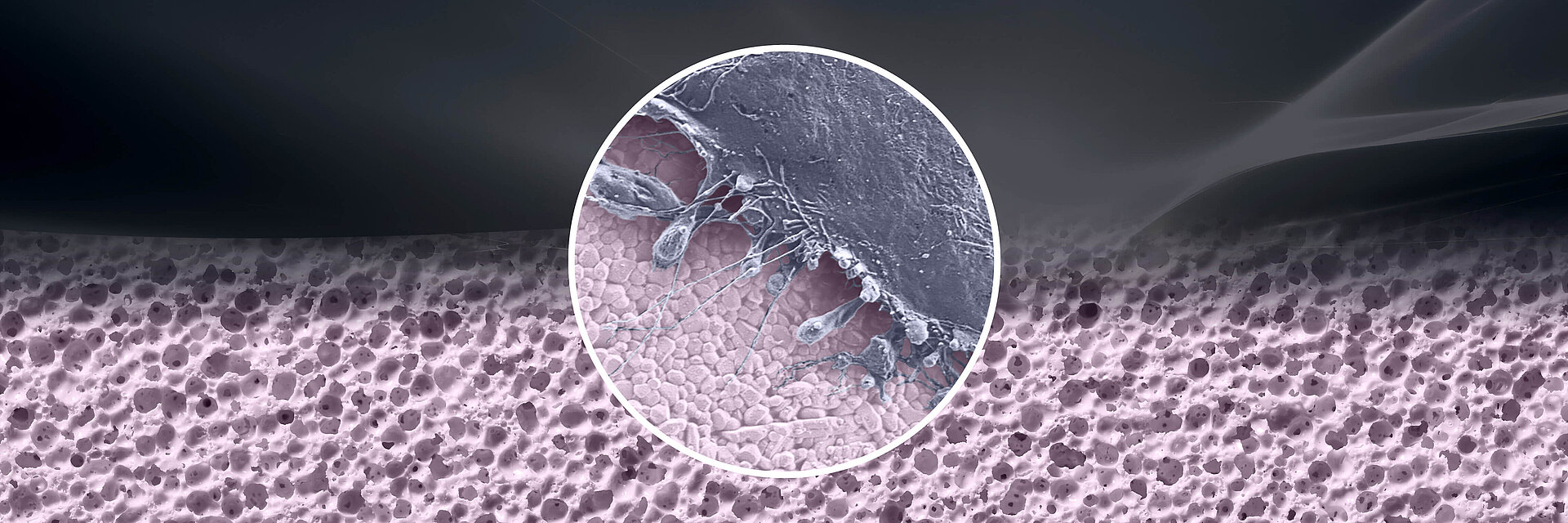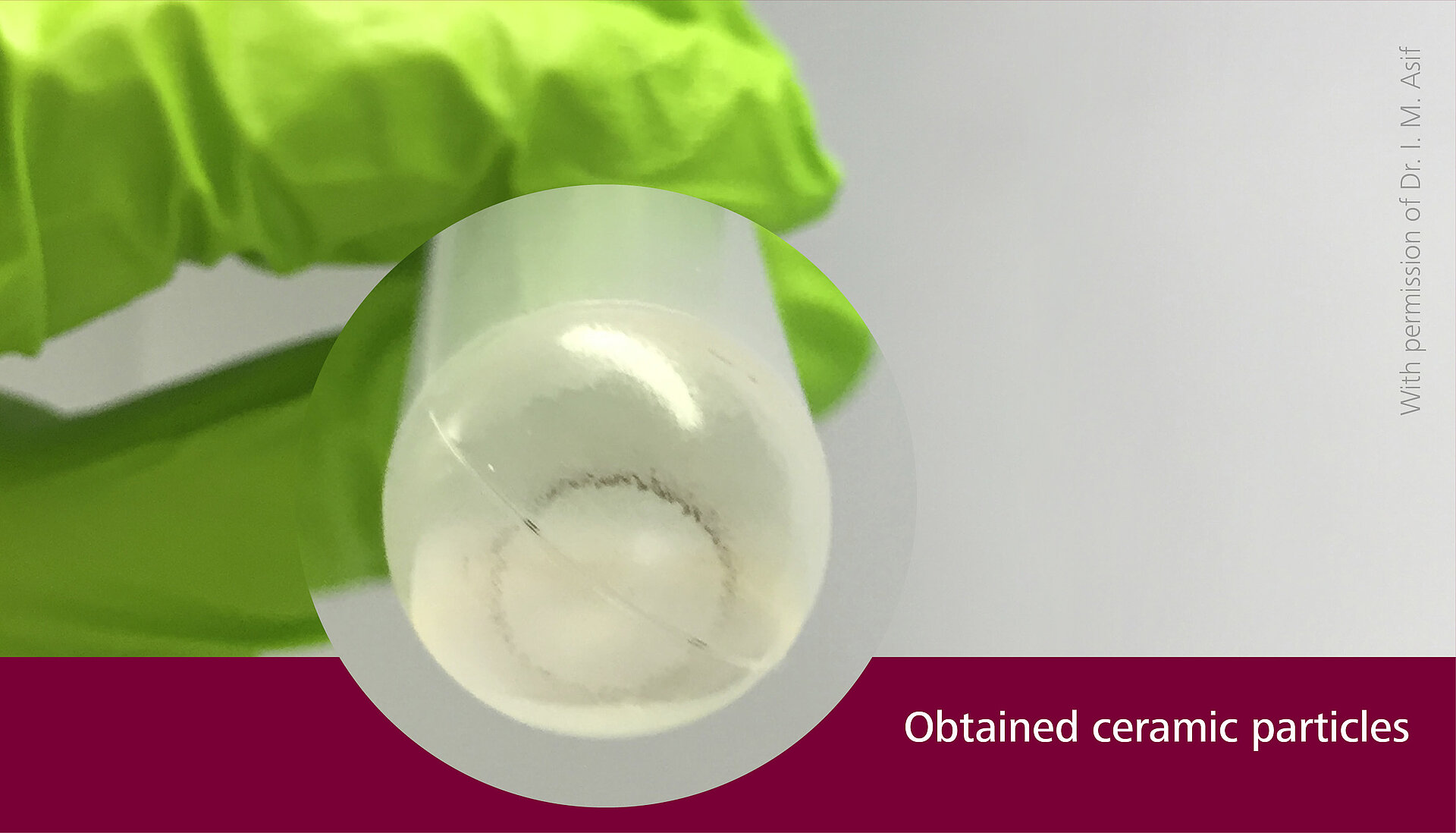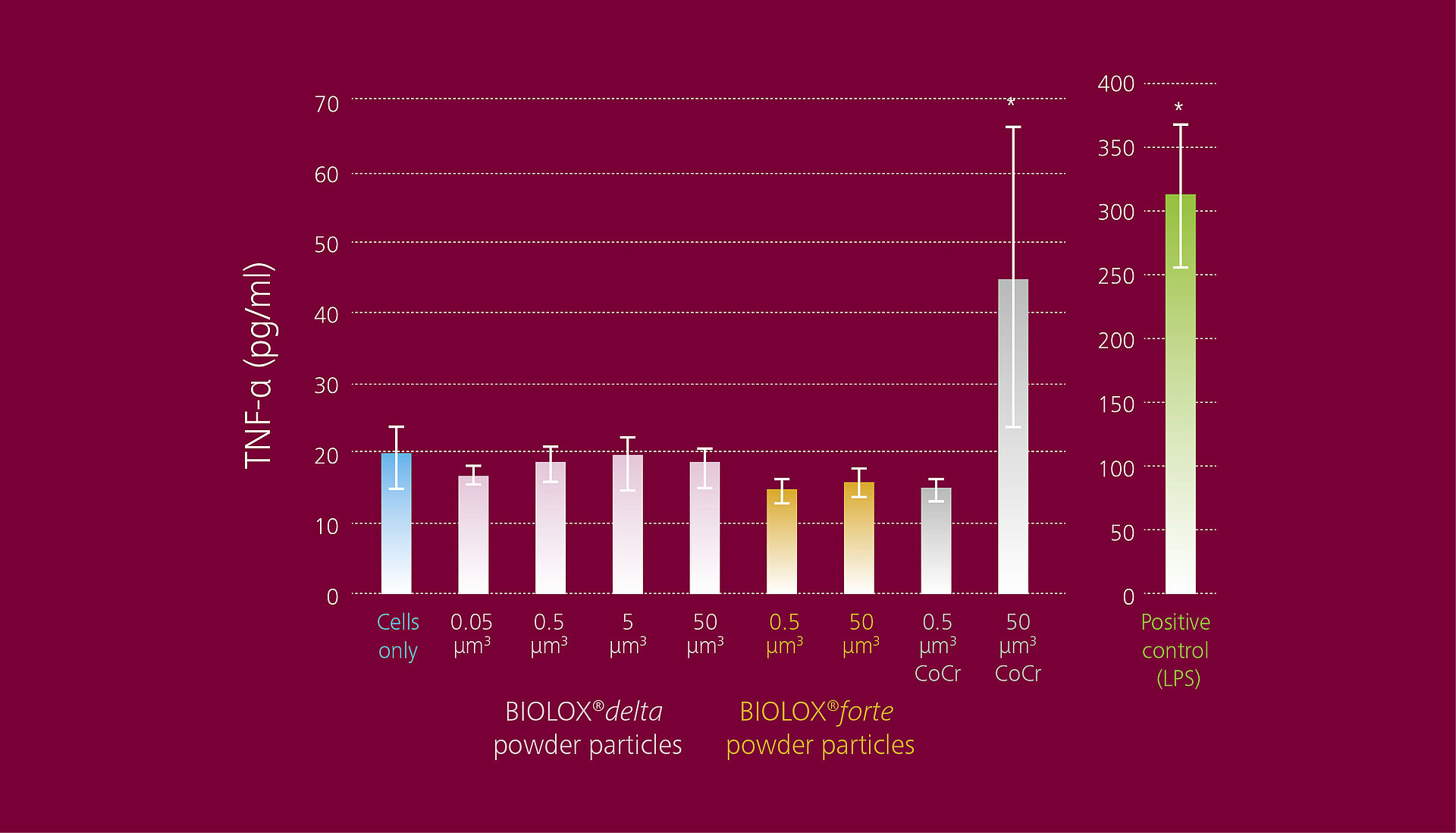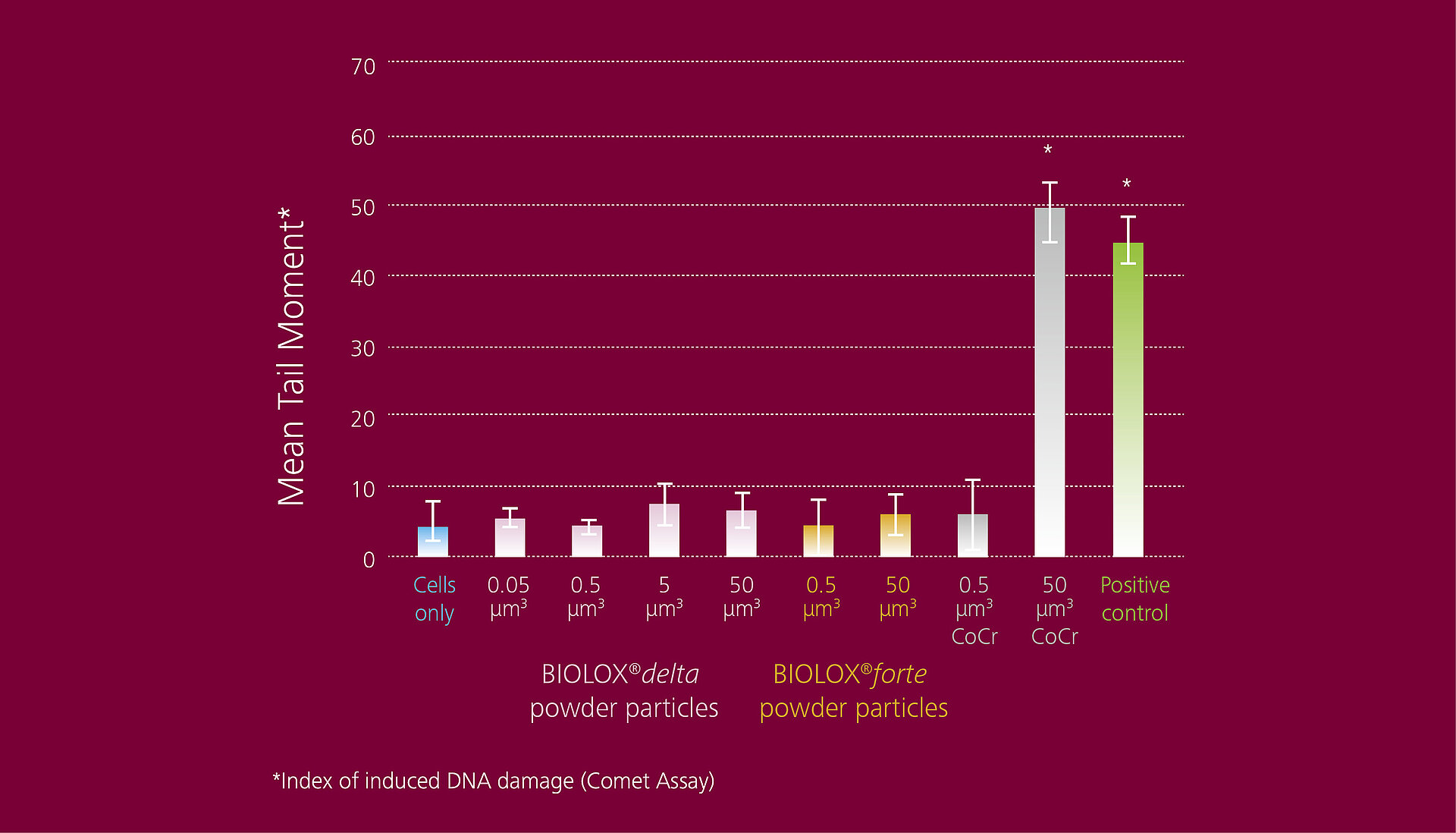Biological impact of BIOLOX®delta
Generating clinically-relevant ceramic particulate wear debris in vitro is a technically challenging process due to the inherent low wear rates of modern ceramics for TJA.
So far, the size, morphology and biological responses of modern composite ceramic for arthroplasty were not investigated. This was made possible by developing innovative wear particle generation, isolation and characterization methods.
Joanne Tipper and her group at the Leeds University investigated the characteristics and biological activity of powder particles and clinically-relevant wear particles, both from BIOLOX®delta zirconia toughened alumina ceramics.
The clinically-relevant BIOLOX®delta wear particles were produced in a hip simulator under extremely severe edge loading conditions. The biological impact of the ceramic particles was assessed using human blood cells from healthy persons. No cytotoxic effects were observed at clinically relevant concentrations. Further the BIOLOX®delta particles failed to stimulate an inflammatory response in terms of TNF-α release and did not cause any significant DNA damage or oxidative stress at clinically relevant concentrations.
Very high doses of particles may stimulate the biological responses. But this is very unlikely to be achieved in the real setting due to the extremely high wear and scratch resistance of BIOLOX®delta. These findings allowed the researchers to conclude that BIOLOX®delta particles have a low biological impact, which may enhance long-term clinical performance.
The wear particles were assessed in terms of:
- Cytotoxicity
- Inflammation
- Genotoxicity
- Oxidative stress
CeramTec is committed to selecting and bringing to interested parties relevant articles on bioceramics related topics. The presented authors’ views and opinions are solely those of the authors of these publications. It is the focus and intent of CeraNews that CeramTec presents and comments on the authors’ views and opinions in a specific context. Such comments and editorials therefore solely express CeramTec’s views and opinions and not necessarily those of the quoted authors.
References
Asif, Imran Mohammed (2018) Characterisation and Biological Impact of Wear Particles from Composite Ceramic Hip Replacements. PhD thesis, University of Leeds. http://etheses.whiterose.ac.uk/20563/




